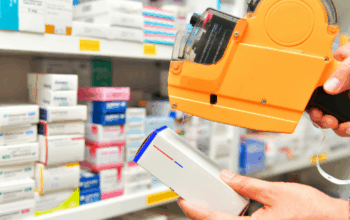In the dynamic landscape of office environments, staying ahead of the curve means more than just keeping up with trends; it’s about understanding how the right furniture can transform workspaces into more productive, comfortable, and visually appealing areas.
As businesses evolve, so do the needs of staff and the design philosophies of the spaces they occupy. This evolution leads to a continuous search for furniture that not only meets functional demands but also contributes to the well-being and efficiency of the workforce.
Amidst this search, the Modern Office Furniture Collection stands out as a beacon for companies looking to revamp their office aesthetic with the latest designs and innovations. This collection combines style, comfort, and functionality, showcasing how modern workplaces are evolving to meet contemporary demands.
Continue reading to uncover the latest trends and innovations in office furniture that can keep your workspace ahead of the curve.
Embracing Ergonomics And Flexibility
The shift towards ergonomic and flexible office furniture marks a significant trend in creating workspaces that foster health and adaptability. This approach meets team members’ immediate needs and easily accommodates future workplace changes.
Below are the trends shaping the future of ergonomic and flexible office environments:
- Adjustable desks and chairs: Central to any ergonomic office, these pieces ensure users can adjust their workstations to suit individual needs, reducing the risk of strain and enhancing comfort throughout the workday. The versatility of adjustable furniture supports various body types and work preferences, enabling users to switch between sitting and standing positions effortlessly.
- Modular furniture systems: These systems exemplify flexibility, allowing organizations to reconfigure layouts with minimal effort. Modular furniture can transform any office to meet current demands without significant downtime or expense, whether adapting to social distancing guidelines or reshaping spaces for collaborative projects.
Prioritizing ergonomic and flexible furniture highlights a progressive approach to workplace design, emphasizing team member comfort and health for better outcomes. As work dynamics change, such furniture ensures spaces stay productive and adaptable, showcasing its value beyond passing trends.
Integrating Technology Seamlessly
As the workplace evolves, integrating technology into office furniture has become essential. This trend reflects a broader shift towards creating environments that are not only productive but also technologically advanced.
Below are vital innovations enhancing office functionality:
- Smart desks: Beyond traditional work surfaces, smart desks feature integrated technology such as charging stations and connectivity ports. These desks eliminate the clutter of wires and keep essential devices powered throughout the day, facilitating a cleaner and more organized workspace.
- Ergonomic accessories with tech integration: Accessories like monitor arms and keyboard trays are evolving to include built-in USB ports and other connectivity options. This helps maintain an ergonomic posture and ensures that technology is within easy reach, making the workspace more efficient and comfortable.
The integration of technology into office furniture is reshaping the modern workspace. By blending ergonomic design with technological enhancements, office furniture is becoming a cornerstone of productivity and connectivity.
Prioritizing Sustainability And Wellness
The emphasis on sustainability and wellness has taken center stage in today’s office environments, reflecting a shift towards more responsible and health-conscious design principles. This movement benefits the planet and enhances team members’ well-being, fostering a more productive and positive workplace.
Below, we delve into the critical components that make up this transformative trend:
- Eco-friendly materials: Offices are increasingly adopting recycled, renewable, or sustainably sourced furniture. This commitment to environmental stewardship helps reduce office spaces’ carbon footprint while supporting global sustainability goals. Products such as bamboo desks, recycled plastic chairs, and biodegradable partitions are becoming commonplace, illustrating a profound respect for ecological balance.
- Designs that promote well-being: Beyond physical health, the mental well-being of staff is a paramount concern. Furniture that encourages movement and physical activity, like sit-stand desks, actively combats the sedentary lifestyle associated with office work. Additionally, including elements that contribute to a calming and stress-free environment—such as plants, natural light filters, and ergonomic seating—plays a significant role in maintaining mental health.
The focus on sustainability and wellness in office furniture is not just a passing trend; it reflects a deeper understanding of the interconnectedness of environmental health, team member well-being, and organizational success. By prioritizing these elements, businesses align themselves with contemporary values and invest in a future where both people and the planet thrive.
Conclusion
The landscape of office furniture is undergoing a remarkable transformation, guided by ergonomics, technology integration, sustainability, and wellness principles. These trends are strategic investments in the future of work environments. By adopting these innovations, businesses can create spaces that elevate productivity and comfort and reflect a commitment to the well-being of their workforce and the planet. The journey towards modernizing office spaces with these considerations in mind paves the way for a healthier, more efficient, and forward-thinking workplace.













